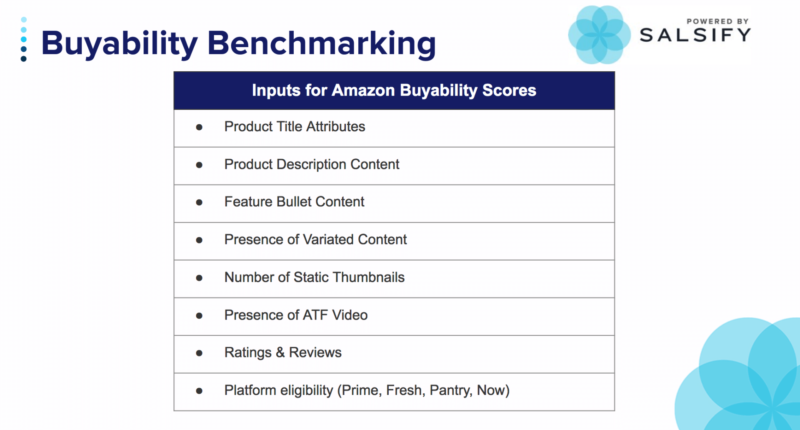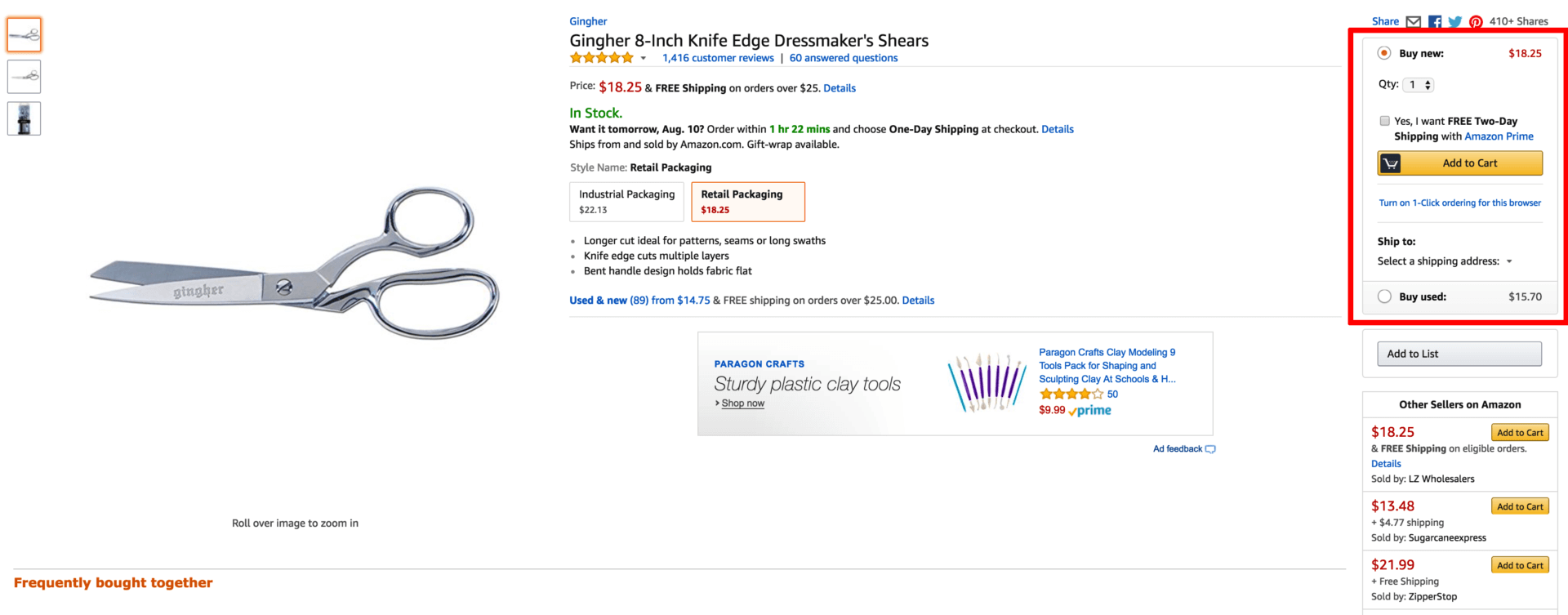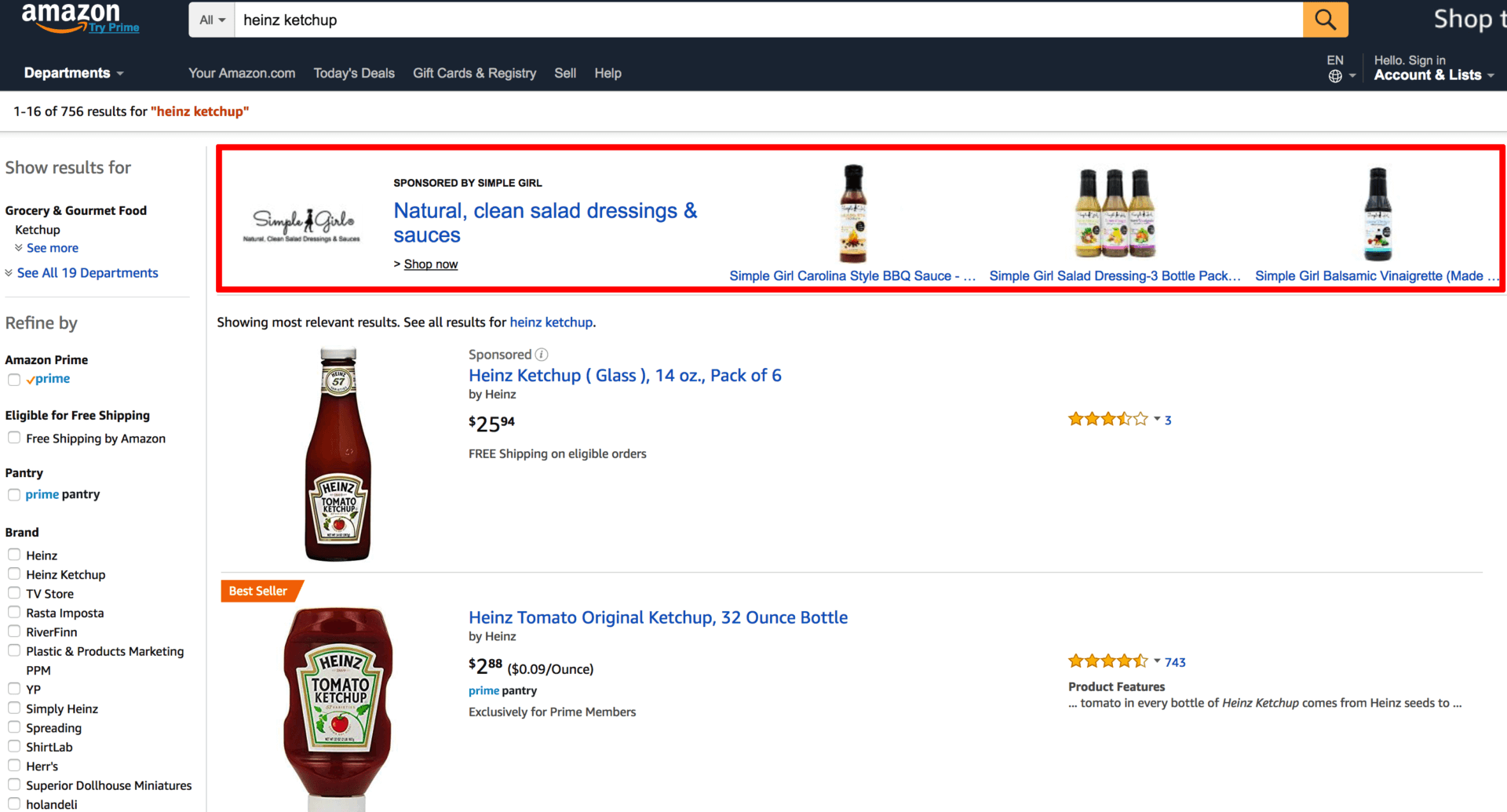Retailers: Here are the building blocks for winning the digital shelf
As the busy holiday season fast approaches, columnist Andrew Waber explains why it's important for marketers to build on a foundation of data and analysis and tap dedicated staff for their most important retail channels.

Every company that sells online goes through several stages of thought to answer this question.
On the data side, perhaps they initially stick to familiar in-store metrics, before eventually moving to new web-centric, customized data points. In terms of staffing the management and analysis of online channels, they may first assign this to a cross-functional team or team member before looking into more dedicated full-time employees.
However, what’s consistent among the most successful, advanced marketers we work with at Salsify, is that they have built upon their foundation of more basic data and analysis. That basic data also incorporates a more advanced range of retailer-specific metrics and is shared beyond a cross-functional internal team to retailer-facing roles.
As we head into the busy holiday season, delivering on this strategy is becoming even more imperative — it takes planning and a desire to look beyond immediate needs to meet certain future challenges.
Going from ‘do something’ to a bona fide strategy
Whether this is happening today or 10 to 20 years ago, companies that do any amount of selling online at some point have a “realization” when it comes to ecommerce — specifically, that it’s important and that they need to do more with it.
Tactically, this typically starts with a desire to simply raise the SKU count on key channels like Amazon. This is an important but non-trivial task, as item setup and retailer requirements are both exhaustive and constantly changing.
As this essential process moves forward, marketers need to be monitoring three important, but baseline data sources:
- POS (point of sale) data
- Out-of-stock data
- Pricing information
Visibility into these metrics is table stakes for making informed management decisions about your larger online sales strategy.
At this point, a company’s goals may just revolve around consistency. For example, are all products that are offline also available online? Are the products described in an accurate, brand-compliant way?
Ultimately, the initial concern is purely whether customers will find the same products regardless of where they shop and whether the pricing and stock information is accurate. Again, this competency and completeness is merely table stakes.
To succeed and elevate the way you market in a digital world, marketers have to concern themselves with how the products themselves are described, priced and marketed on each online channel in order to increase findability and buyability.
What content drives sales on Amazon vs. Walmart? What brand content is needed to get found on Google vs. Amazon vs. specialty retailers?
Marketers need to answer the question, “What drives findability across OUR vertical?” and capture metrics that will answer it for each channel where your products are sold.
This understandably varies considerably — how you search for food staples is incredibly different from how you go about researching high-end electronics. Users are much more likely to search for “Mr. Pibb” than they are “fizzy drinks that aren’t coke.” But for other verticals, it could be much more like the latter, Google-esque query (e.g., “front loading washing machine white”).
In both cases, using insights gleaned from Amazon’s Retail Analytics, Google Analytics or other SEO-focused tools, you should be able to form a foundation for the key terms consumers are searching for in your category. This helps frame your product content in the context of the actual search behavior of real consumers, rather than the marketing copy you may put on the product itself.
Many successful companies take this a step further by having dedicated staff tasked with managing the company’s presence on specific retail channels (e.g., Director of Amazon Ecommerce Sales), rather than having all-encompassing ecommerce roles.
These businesses know that optimizing product content to each retailer’s best practices pays major dividends, but it isn’t an easy job. You benefit by having a staff member immersed in that retailer’s universe so you don’t lose a step.
So what should you focus on going forward? Here are major things to monitor, particularly over the next year:
Focus on the ‘buy box’ on Amazon
When it comes to Amazon, instead of price — just focus on the “buy box” — what’s above the fold on the product page. Are you beating out other sellers here?
Suck up as much data from retail channels as you can
Experienced companies use subsequent insights via data from retail channels to create regionalized marketing and greater price intelligence. Even if you can’t deliver on that presently, getting the bones in place now will ease the transition later.
Buy your brand keywords on AMS
This is perhaps the most critical tactic in the near term. If you’re Heinz Ketchup, you should own that Amazon Marketing Services (AMS) term — a competitor WILL buy it if you don’t. Also consider buying product-listing ads (PLAs) for your top terms.
Along these lines, AMS is still in its relatively early days. There may be tremendously underpriced terms on AMS within your competitive market. If you look for these “diamonds in the rough,” you can find them.
While some of these tips are Amazon-specific, your chief focus should initially be on the channel or channels that are most important to your business. Most brands feel that they need to be sophisticated on Amazon but basic on others, although this varies by industry.
Regardless, even if you feel as if you’ve fallen behind in your ecommerce strategy, resist the temptation to narrowly focus your efforts on immediate needs. Take a long view on continually building on that foundation of data and analysis, along with staffing for your most important retail channels, and you’ll be mirroring the actions of successful online brands.
Opinions expressed in this article are those of the guest author and not necessarily MarTech. Staff authors are listed here.
Related stories
New on MarTech



